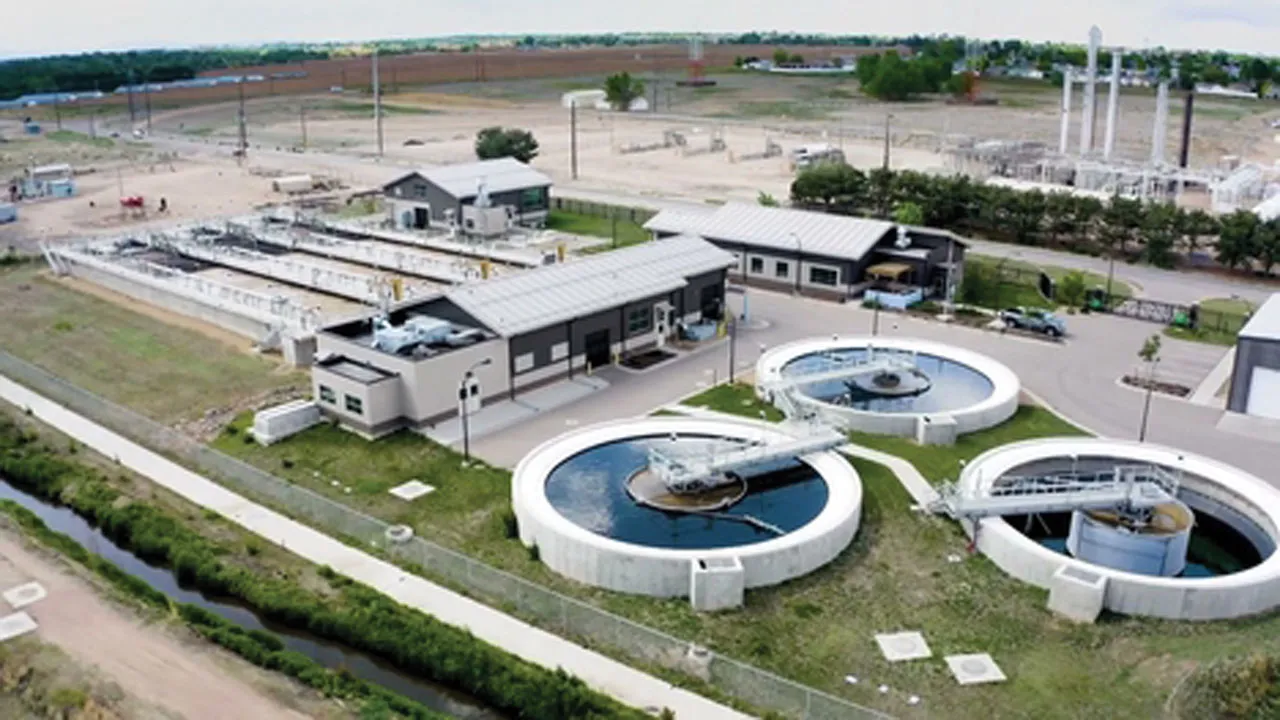Turnpike helps define how economy has changed

Back when the Boulder County Business Report was founded, people usually still referred to this highway as the Turnpike.
The highway U.S. 36 from Boulder to Denver, that is in the morning. In the afternoon, it was more like Denver to Boulder. There was a toll booth between Broomfield and Boulder, but the traffic was such that the bonds were paid off 13 years early, and the highway became a free ride in 1967.
Forty years later, the traffic jams have largely been reversed to west in the morning and east to Denver in the evening. And as the major county municipalities approach buildout, employment within the county has soared. But all of this would have been hard to predict, even for the optimistic BCBR founders.
SPONSORED CONTENT

“When I came in ’89, many people from Boulder still drove to Denver to work, that was well known, and it was a challenging time (economically) for the state,” said John Tayer, president and CEO of the Boulder Chamber of Commerce. What is usually viewed as two separate recessions rocked the state in the 1980s, mostly attributed to downturns in the oil and gas industry, along with other significant factors, such as overbuilding.
But the basic building blocks for Boulder County, specifically the city of Boulder, had been in place for some time before things began to really hum, Tayer said. “Taking the university (when Colorado became a state in 1876) instead of the prison, was a big one,” he said, noting it put the city of Boulder on a track that would pay huge dividends generations later.
By the 1970s, the city would have the federal labs that would not only provide high-paying employment — the National Institutes of Standards, the National Oceanic and Atmospheric Administration and the Nation Center for Atmospheric Research — but would also lead to spin-off businesses down the line.
See related story BizWest celebrates 40 years covering business and recognizes 40 iconic leaders who inspired the region’s development.
IBM, with its plant halfway between Boulder and Longmont, had been in place since 1965, employing more than 5,000 people. Importantly, it also became important for its spinoff business and expertise. No more important than those spinoffs was StorageTek, formed by IBM engineers Jesse Aweida, Juan Rodriguez, Zoltan Herger and Thomas Kavanagh, which started with IBM compatible tape drive storage units and would rival IBM in employment at its Louisville headquarters.
“You also had Ball, and the early stages of our pharmaceutical companies. Amgen came to town,” Tayer continued. “But you also had this early stage of the organic food movement, Celestial Seasoning and White Wave.”
The county and the city of Boulder had also taken measures that would immensely impact industry location, beginning in the late 1970s and early 1980s. First the city slowed its residential building permits, and the county took steps to downzone unincorporated industrial and commercial sites, and both the city and county used open space funds to create buffers between municipalities.
For other major county cities,the 1980s would be a mixed bag. Slowed residential growth put a few in rather dire financial straits, including Lafayette and Longmont, as the permit fees were actually funding government costs.

In Longmont, a handful of business and civic leaders formed the Economic Development Association of Longmont, the precursor of today’s Longmont Economic Development Partnership, said Jessica Erickson, the president and CEO of the organization.
Cities within the county were often competing with each other to attract large employers and began offering tax incentives to seal the deal. In Longmont, which already had a base of computer storage firms, the city went hard after McClain Co. Inc., one of the largest supply chain services leaders, providing grocery and foodservice supply chain solutions for convenience stores. That deal, typical of the time, included tax incentives and a major city investment in extending services.
“There was a very different makeup from the economy today; it truly was more of a blue-collar bedroom community. EDAL was an important part of that change,” Erickson said. “But we are still one of the largest global players in storage and that was spun out of the IBM and StorageTek ecosystems.”
For Tayer — who served in policy and public affairs positions with the Boulder City Manager’s Office and the local pharmaceutical company, Roche Colorado — the path to the county’s solid and diversified economy occurred in waves.
“There was a phase where we had burgeoning innovation, but we didn’t have the investment capital,” he said. “The vast majority of startups were acquired by investors who didn’t want to travel to visit their investments, so you saw a lot being moved to the Bay area. It took a while to build up that venture capital here.”
“A second wave was we really didn’t have the business executives to take the businesses to the next level,” Tayer said.
In time, those impairments took care of themselves, as more investors saw the advantage of moving to their investments, instead of moving the companies. Importantly, the complexity of building in Boulder helped drive business to other county municipalities, where those corporate heads might also choose to live.
But in the east county, there was still a lot of heavy lifting to do, and no city defines that effort more than Broomfield.
Broomfield had a manufacturing base in the early 1980s, led by Ball Corp., which was mainly focused on packaging. The city saw residential and commercial expansion in ’80s, but in terms of economic development it also saw the annexation of land that would become the Interlocken business park.

But Broomfield was hampered by the fact that the city actually was situated in four counties, Boulder, Adams, Weld and Jefferson counties. That was a problem for providing residents basic services, such as vehicle registration and driver licenses, but coordinating development was also problematic, said Jennifer Hoffman, the city and county manager.
So by the 1990s, there was a concerted grass roots push to create Broomfield County, which required a statewide vote. A small group led by Mayor Bill Berens and City Manager George Deciro led the push at the legislature.
“This was a hard lift; nobody had done this before,” Hoffman said. The defining moment came in 1998, when the move was approved by voters. Since then it’s been full speed ahead for the new county.
“Other communities began to take that overflow” from Boulder, she said. “A lot of that really came to Broomfield and Longmont.”
The one-stop development shopping at Broomfield, as well as easy access to Rocky Mountain Metropolitan Airport, which can accommodate large jets, has attracted a multitude of businesses. Today, the city hosts international firms from Switzerland, Sweden, the Netherlands and Germany, and headquarters companies including Vail Resorts, Crocs and White Wave.
Sun Microsystems, which absorbed StorageTek and is now part of Oracle, was an early addition to Interlocken, and Ball Aerospace has added advanced materials development to its Broomfeild mix.

“It’s very much a world economy,” said Jeff Romine, the director of Development Finance for the city’s Economic Vitality department. “If there’s anything any of us has learned, it’s you can’t sink everything into one hard industry — you have to diversify.”
Hoffman noted that as the city approaches buildout, development choices have become more pronounced. “It’s like an individual getting older, you have to be careful about your investment choices; when you are young you can make up for your mistakes.”
Romine noted that getting the balance between residential and commercial is also important to that concept. Today Broomfield County boasts of roughly 40,000 jobs and a population of about 75,000.
Boulder still leads the pack in this regard, with about 99,000 jobs in a population of 104,000, but the rest of the county is getting there as well.
Louisville and Lafayette are home to a mixture of tech and other businesses. Importantly, both also have large hospital developments, with the accompanying services and specialty jobs.
Despite problems filling the former StorageTek facility, Louisville boasts almost 14,000 jobs with a population of only 21,000.
Longmont probably has the most room to grow in the county, thus perhaps the most potential businesses to host.
“We will eventually be the largest city in the county,” Erickson said. She noted that Longmont has an advantage in supplying businesses with city electricity and access to the city’s fiber network. In addition, Longmont also probably has the best water portfolio in the county.
“We’ve really taken a concerted effort to diversify our local economy to be resilient and sustainable,” she said. Today the city supports industry in information technology, aerospace, life science and a burgeoning food and beverage industry that now includes a new Smuckers plant and two of the largest craft brewers in the state.
There were other blips along the way, Tayer said, the dot.com boom and bust would come and go, though it did not make much of a splash in overall employment numbers. As communities approach build out, there’s also less competition between cities for those vital jobs.
“We’re so tied together now in Boulder County, now housing, workforce mobility and traffic are our mutual concerns, and our organization (the chamber) reflects that now.
“It’s a Boulder regional economy and that creates greater stability for our future.”
Back when the Boulder County Business Report was founded, people usually still referred to this highway as the Turnpike.
The highway U.S. 36 from Boulder to Denver, that is in the morning. In the afternoon, it was more like Denver to Boulder. There was a toll booth between Broomfield and Boulder, but the traffic was such that the bonds were paid off 13 years early, and the highway became a free ride in 1967.
Forty years later, the traffic jams have largely been reversed to west in the morning and east to Denver in the evening. And as the major county municipalities…




